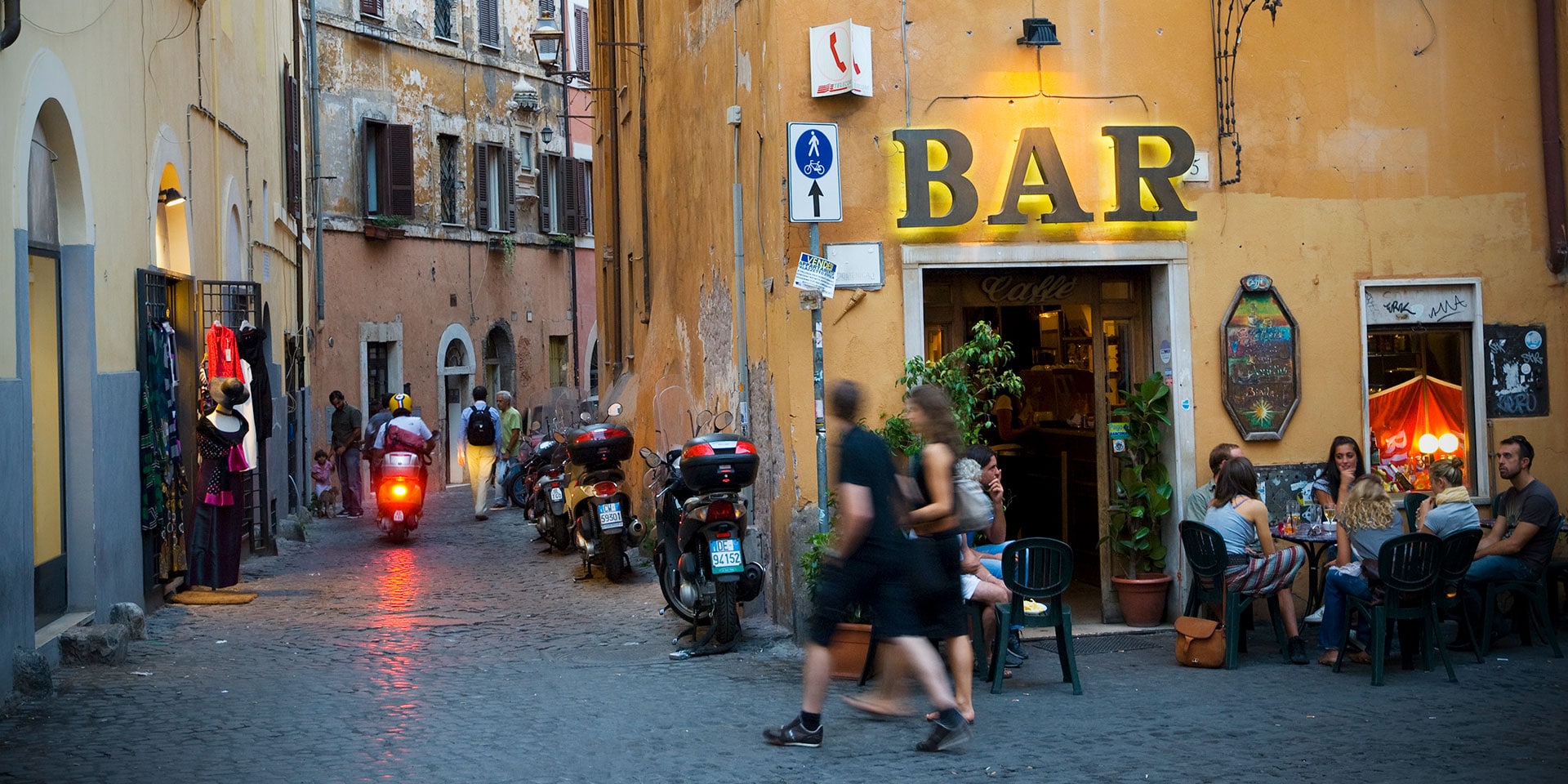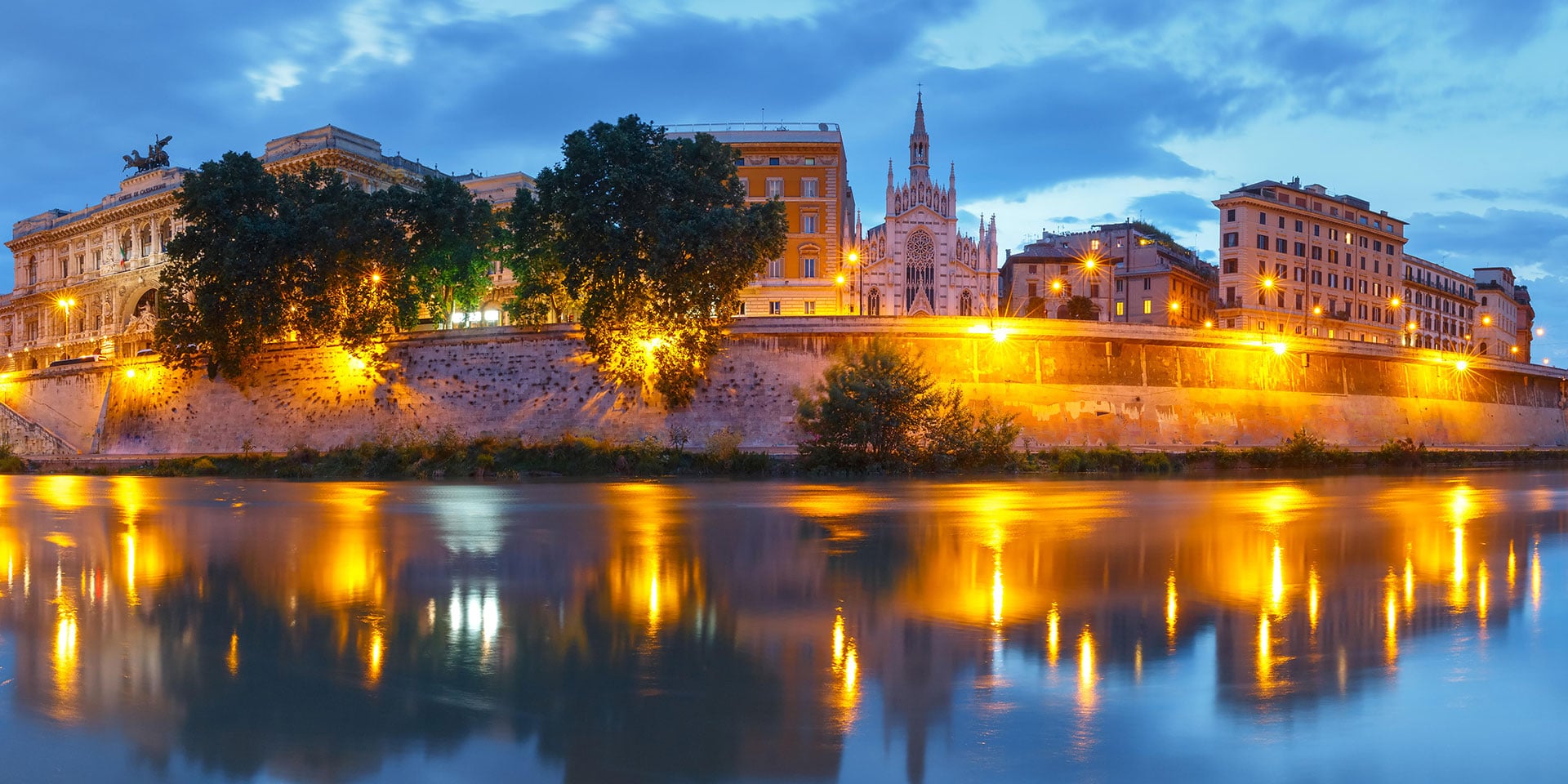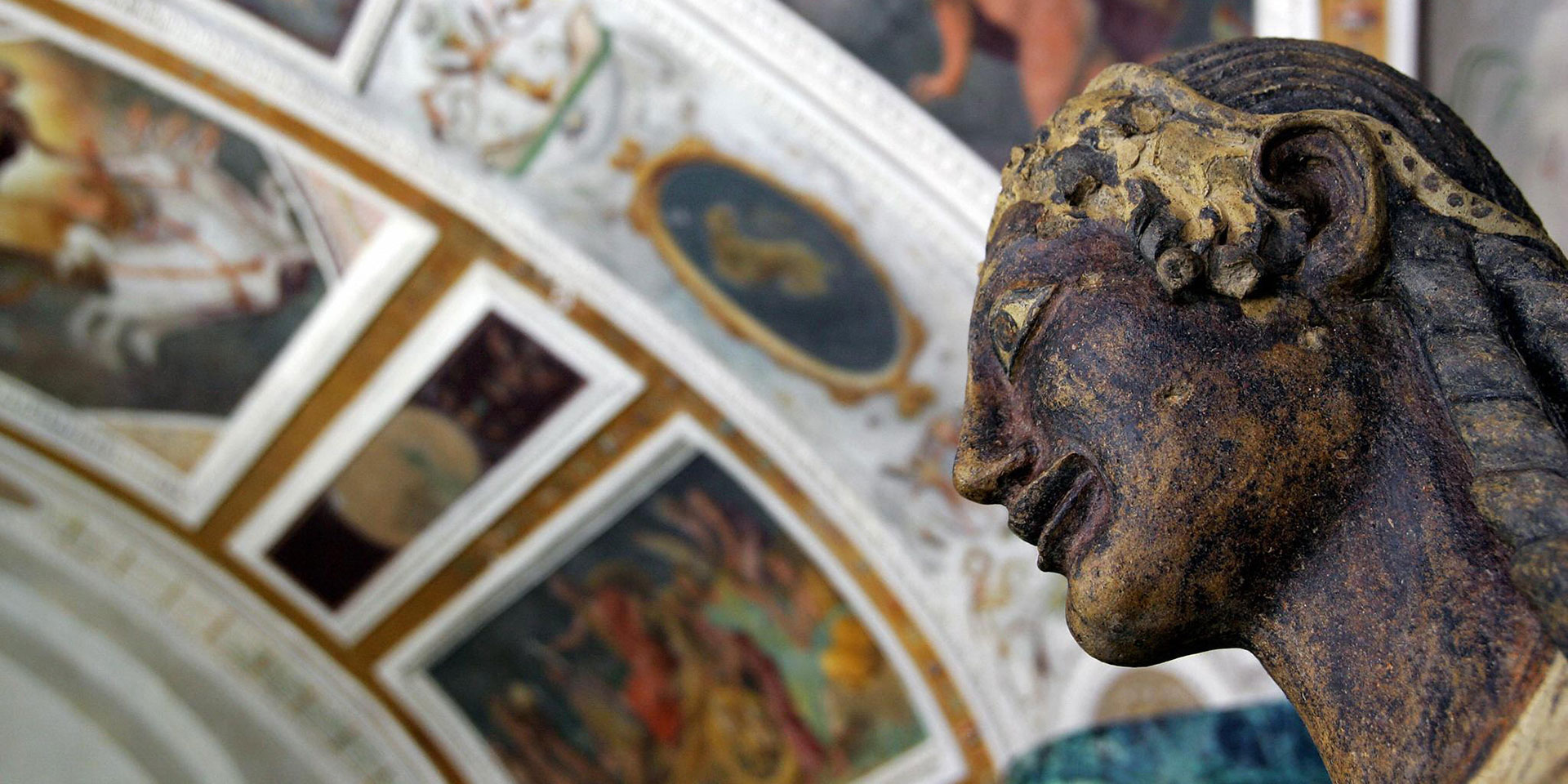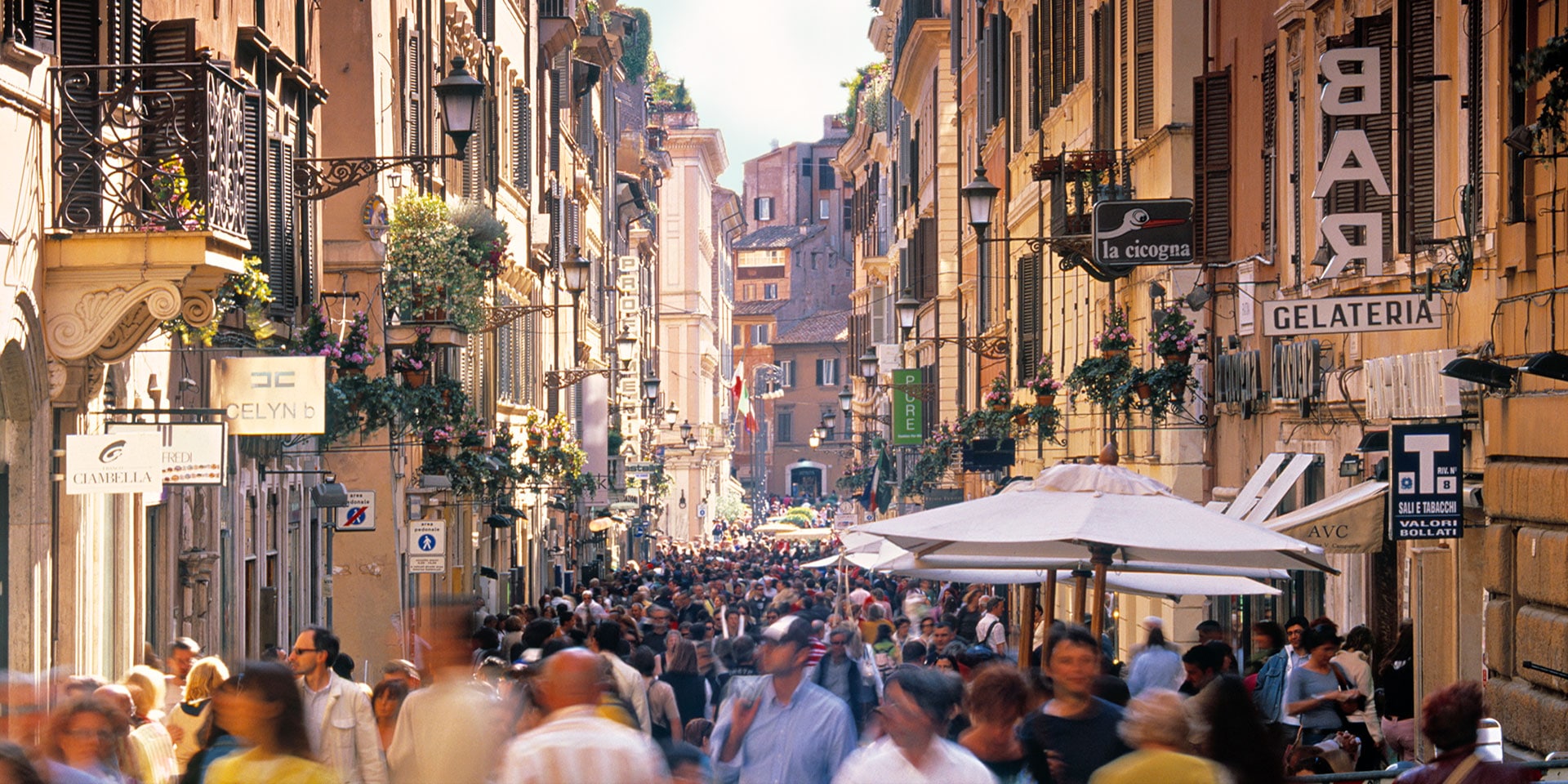Rome has a lot more to offer than drool-worthy gelato and melt-in-your-mouth pizza pies, although you should definitely indulge in both. When it comes to the moments that craft everyday life, sometimes the views are best from afar — whether sipping your morning espresso or enjoying a glass of sangiovese at dinner.
From iconic landmarks and charming centuries-old buildings to artisan markets and shopping streets, here are five of Rome’s best neighborhoods in which to sit, sip and stare. Time for some molto bello people-watching.
For art in all forms: Trastevere

Home to markets, outdoor cafés, tattoo shops and microbreweries, Trastevere is colorful in every sense of the word. With a name that means, “across the Tiber,” the formerly working-class medieval district has gentrified over the years. Major changes took shape in the 1970s as expats and bohemians moved to the area. Since then, Trastevere has highlighted the arts.
As lively as the bars and restaurants are in Trastevere, the best people-watching happens mid-wander. Take an afternoon jaunt to the Campo de’ Fiori market or window shop along Via del Moro. Side streets are just as photogenic as the main avenues, what with crumbled buildings and gritty street art at every turn.
Between the crisscross streets and the decadent mosaics inside the Basilica di Santa Maria, Trastevere is the best sort of sensory overload.
For influences old and new: Monti
For Rome’s oldest quarter, Monti is surprisingly innovative. With cobblestone streets, antique shops and artisans selling handmade wares, this is a go-to spot for people-watching. You’ll see both young and old here, from 20-something hipsters and budding entrepreneurs to born-and-raised Monti residents who honor tradition above all else.
With a bevy of fine dining and quirky bars to entertain, there’s no shortage of espressos and aperitivos to be sipped. Snag an outdoor table at La Bottega Del Caffè, which overlooks the Piazza della Madonna dei Monti. Shaded under umbrellas and vines, it’s the perfect midday stopping point.
For something quieter but just as scenic, settle into a two-top table at La Casetta della Madonna. Despite nearby monuments and attractions, Monti is a mostly working-class neighborhood, so expect to see signs of everyday life from your café window.
For iconic views (minus the crew): Prati

Whereas Monti is more of a hipster haven, Prati is a mostly white-collar neighborhood. It’s also a prime spot for architecture gazing. Keep an eye out for the area’s art nouveau and Umbertino architecture as well as for the Palazzo di Giustizia in Piazza Cavour, where you’ll find the two houses of the Supreme Court.
If you’re crunched for time, Prati has its advantages: It’s close to the Vatican and Tiber yet far enough away to make you feel like you’re one among the locals. A café in the Piazza Cavour is your best bet for people-watching, especially in the evening, when you can see the shift in fashion and flair as people swap their work clothes for more elegant duds. Order a light lunch or evening aperitivo at Gran Caffè Cavour as you settle into a seat outside.
For celebrated steps: Tridente
This northern neighborhood gets its name from the three main roads that lead from Piazza del Popolo: Via di Ripetta, Via del Corso and Via del Babuino. Here you’ll find the infamous Spanish Steps and the Trevi Fountain, both brimming with passersby at almost any hour, day or night. It’s a place to see and be seen, so either take in the whole picture or hone in on the details.
Beyond the celebrated Spanish Steps, however, are several streets of high-end shopping — Via Condotti in particular. As one of Rome’s most upscale neighborhoods, Tridente lets you have your pick of designer boutiques, top-rated restaurants and pricey hotels.
For the finer things: Parioli

If you’re hoping to beat the crowds, take a stroll through the mostly residential Parioli neighborhood. Ideal for travelers who are craving more solitude, Parioli is home to some of Rome’s best restaurants, hotels, public parks and cultural museums — the National Etruscan Museum of Villa Giulia and the Museo Civico di Zoologia to name a few.
There are also three main green spaces that frame the Parioli neighborhood: Villa Borghese to the south and Villa Glori and Villa Ada to the north. Since Parioli is a bit less central than some of the other neighborhoods on this list — and therefore moves at a less hectic pace — you’ll find the vibe a laid-back escape from Rome’s bustle.




